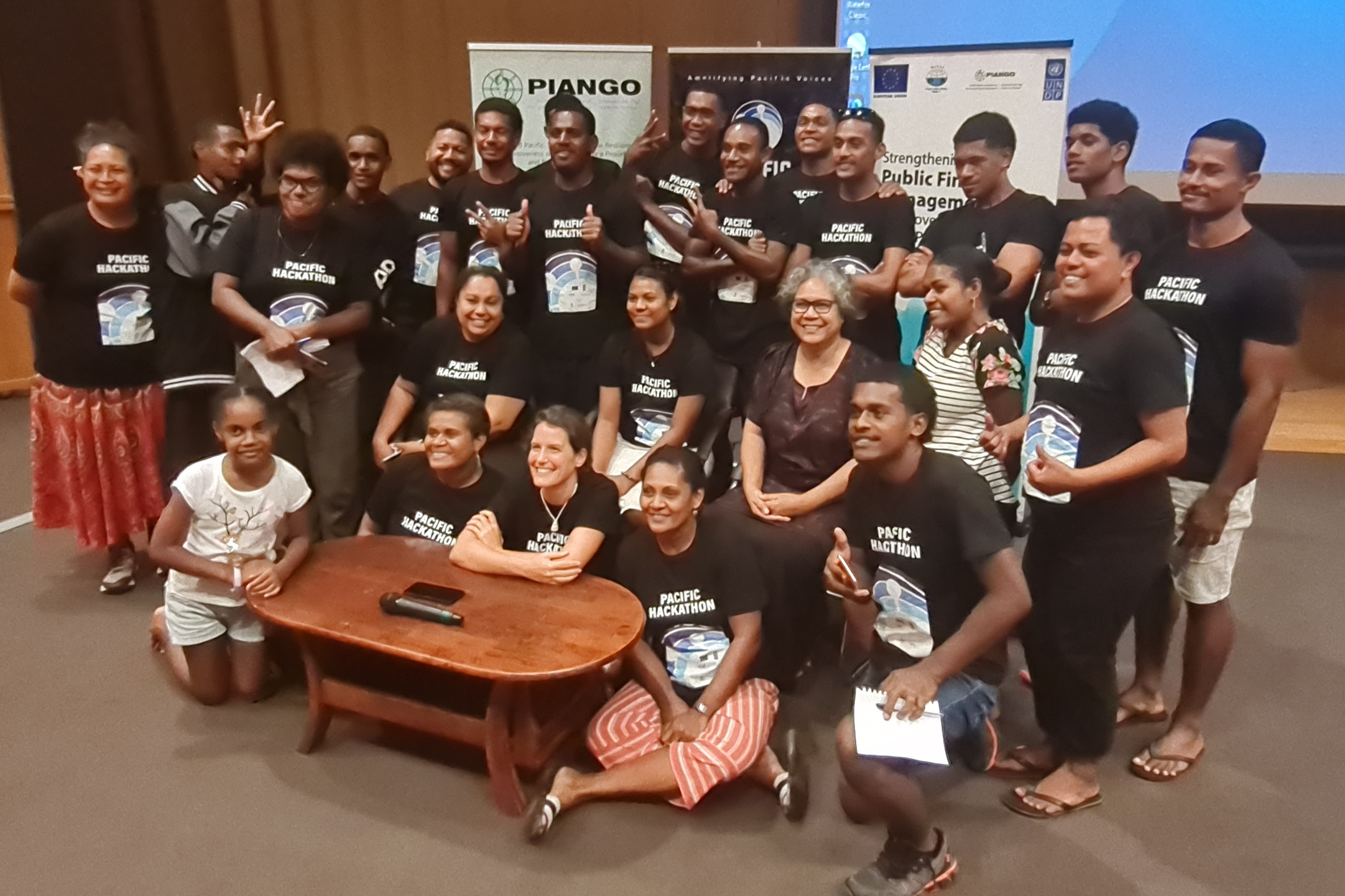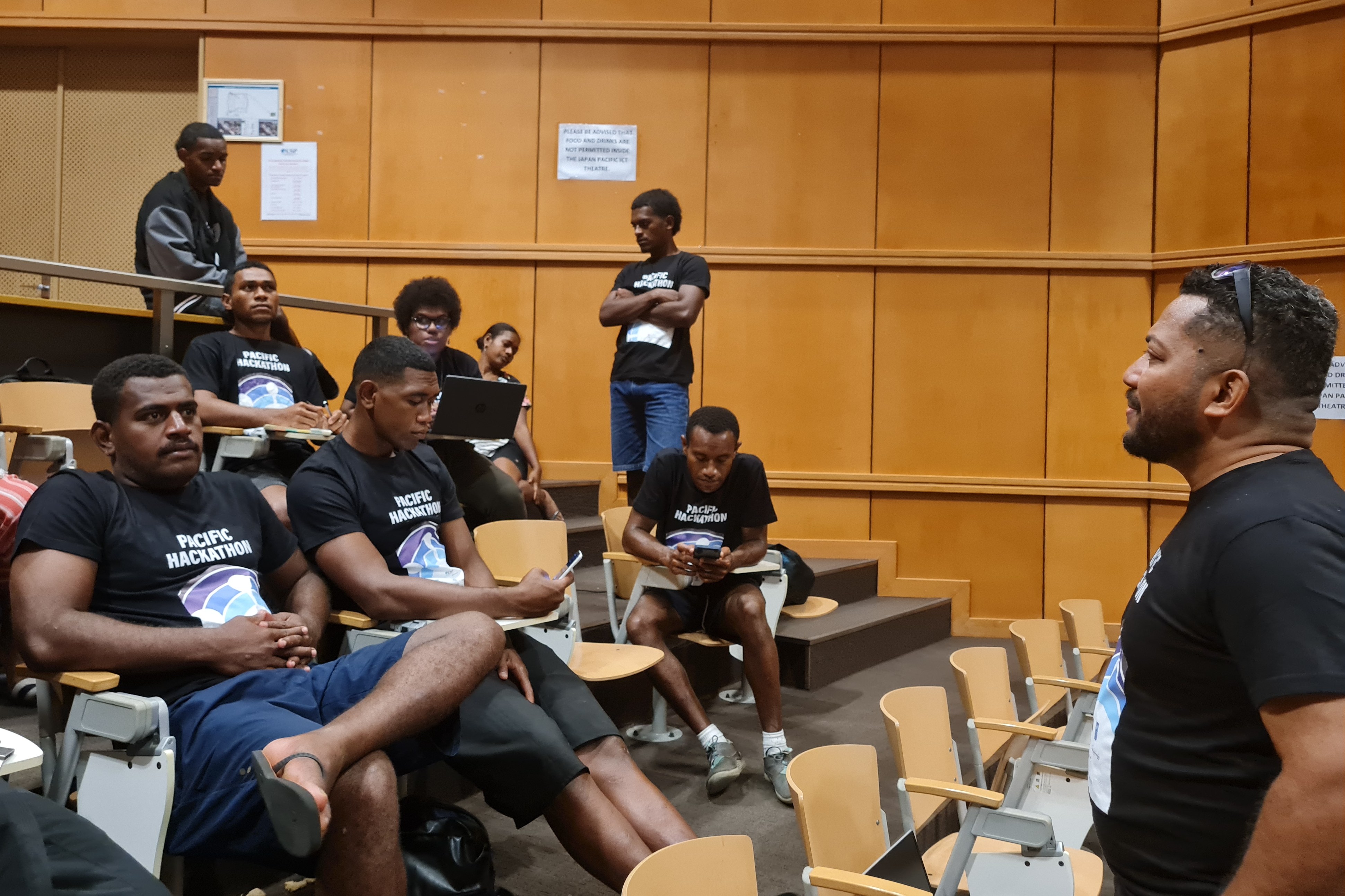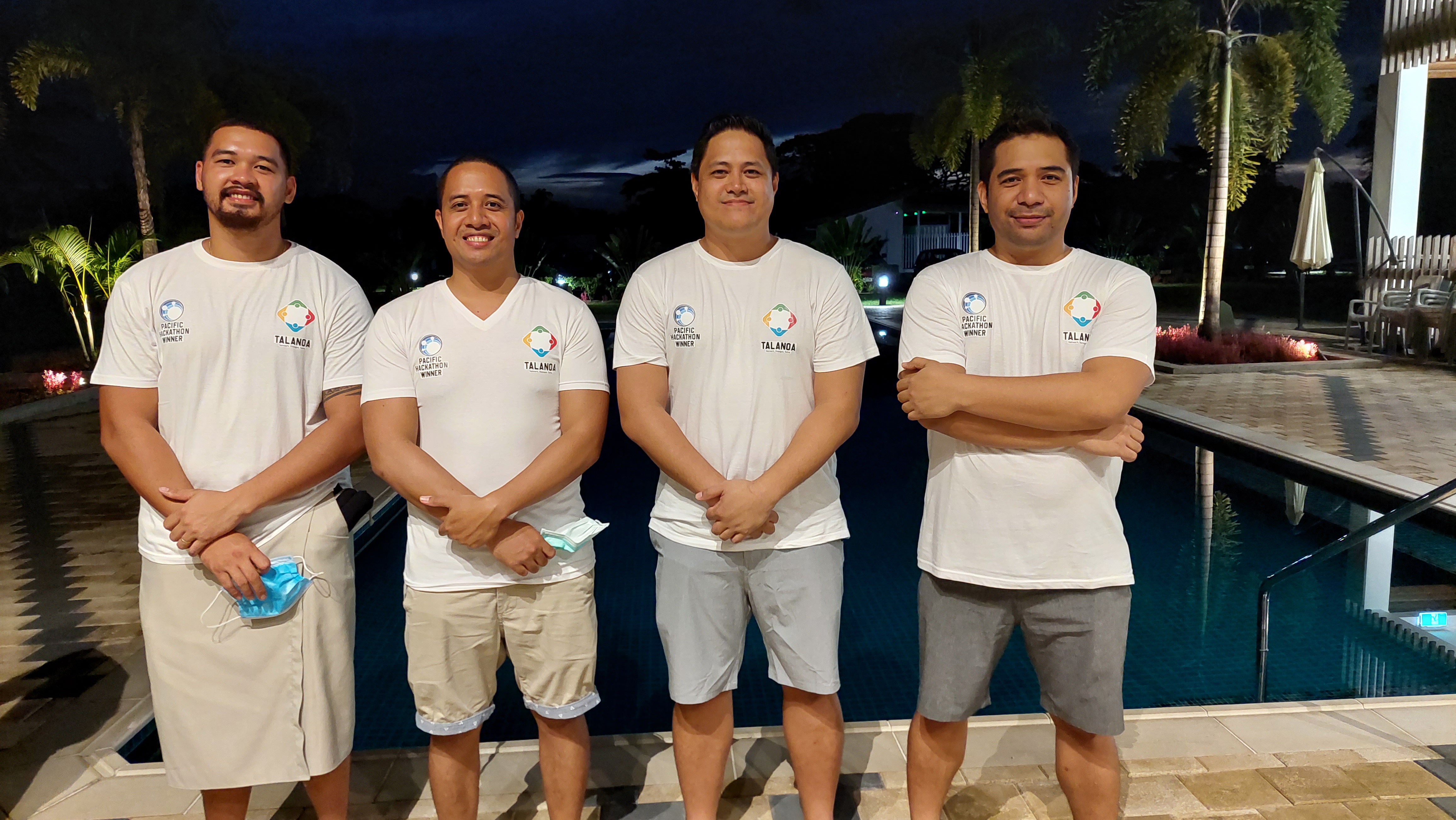The use of ICTs for Public Finance Sector in PICs: What can we learn? III
June 7, 2022

Pacific hackathon at the University of the South Pacific
In this final of the series on ICTs and Public Finance (read the last blog here), we want to share what we learned from the Pacific Hackathon. Essentially, a hackathon is a short event bringing together individuals to create (mostly digital) solution pitches to a challenge. This challenge in the world of hackathons is often referred to as ‘THE PROBLEM STATEMENT’, which is generally the problem clearly spelt out in a sentence or two.
As explained by one of the hackathon mentors, Watisoni Kaumaitotoya, "A digital solution has certain characteristics in that it uses technology (especially those that are readily available for example, websites, mobile apps, auto queue systems, etc.) and consolidates or automates an otherwise manual and tedious process." For example, we discussed in an earlier blog, how The Civil Society Forum of Tonga uses Tasilisili (an example of a digital platform) to track funding and budget process.
Inspired by the Tasilisili platform, the Pacific Island Association of NGOs (PIANGO) and their respective National Liaison Units or country chapters, have been on a quest for a regional digital solution. Whatever it was going to be, it needed to complement their current ways of working and it had to capture and amplify every Pacific voice. It had to provide an avenue for every Pacific islander to have a say on an issue that concerned them as individuals or as a community.
Thankfully, the Pacific Islands of the Chapter of the Internet Society (PICISOC) and the Pacific Women in Tech group were mobilising their own network of techies (people who are comfortable with computers and hack or thrive at creating digital solutions) and they were keen to host a regional hackathon.
The next step involved bringing PICISOC and PIANGO together with the support of the UN Development Programme's Public Finance Management project for a brainstorming session. The objective was to define the problem statement that captures: How do you give a voice to Pacific people, how do you convey these voices (or concerns) to decision makers at the national and regional levels.
The challenge was issued and on the 12th and 13th of April 2022, more than 150 Pacific techies, innovators and problem solvers came together to decipher, code and build a digital platform for what they knew would 'Amplify Pacific Voices’. The long term goal would be for the platform to morph into a tool that monitors the implementation of regional decisions right down to the national level. An ideal solution at some point, could measure these leaders' commitments via national budget allocations.
With the support of PIANGO, global and Pacific IT experts, a total of 18 submissions from ten countries were submitted through the platform. PICISOC announced the winners with Samoa’s team Talanoa as the overall winner who will now work with PIANGO to see through the full development of the solution.
In Fiji, the Ahava Project came with a dynamic team of young people that currently live on the streets. Their reaction, "We didn’t even know that we had the creative ability to also come up with solutions."

Watisoni Kaumaitotoya (far right) provides guidance to Ahava Project team.
Everyone is capable of contributing to finding the solution. After all, 'the problem' required a digital platform that catered for all Pacific voices. Hackathons, as we learned, are a great way to generate creative solutions in a short period of time. Some of the key highlights and learnings include:
- Pacific Women in ICT. They are already leading in the cyberworld. The hackathon was spearheaded by the current PICISOC Board Chair, Letitia Masasea and former board member, Cherie Lagakali, Seluvaia Kauvaka, Oliana Nayago (a group of talented young women from PICISOC & USP) and their women in Tech networks. Appreciation also to Alex Abraham for the support and hard work and to the brave ICT men that took on the challenge.
- YOU DO NOT NEED TO BE AN IT EXPERT! Hackathons are for everyone. Hackathons are about solving problems and a diverse team benefits from a multitude of perspectives.
- The problem statement is a critical component of the hackathon. Effective digital solutions are only possible if the participants fully understand the problem. Have a series of creative brainstorming sessions with key partners to hash out the elements of the problem statement.
- IT ingenuity exists and there is already a tech community in the region. The lockdown and the aftermath of a volcanic eruption didn’t deter the cyber communities in Samoa, Vanuatu and Tonga from participating.
- Include global mentors and judges. It adds value to the hackathon experience - the participants will thank you for it.
- Reach out to the experts and build on the experience of others. It was a first for the region, thanks to the leadership role of PICISOC and PIANGO in the execution of the hackathon and support from UNDP global and Pacific colleagues. Gratitude to the teams in Bangkok and the Pacific Accelerator lab, Samoa IT Association (SITA), Cert NZ and Oceania Cyber Security Centre (OCSC) for insights into their hackathon experience.
In a nutshell, it has been rewarding. We can now say we have access to Pacific ICT experts and have an opportunity to explore more Pacific friendly digital solutions created by our very own techies.
Stay tuned for more reflections on the innovative ways civil society is working to advance the accountability and public finance oversight agenda in the region.

Pacific Hackathon winning team - Team Talanoa from Samoa.

 Locations
Locations
